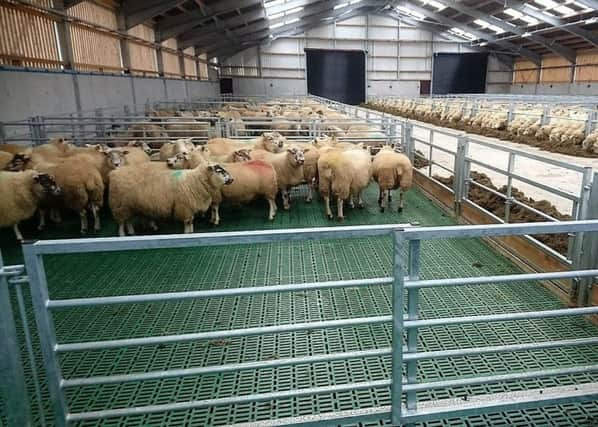DAERA Management Notes: Beef and sheep


What area of the farm could be improved? Going forward what measurements are required to monitor physical and financial performance and what are your desired targets? Determining baseline and achievable target figures are vital for assessing where things are now and where you need them to be. Good record keeping allows a farm business to benchmark itself from one year to the next and facilitates informed decision making to drive improvement. There are of course factors outside the farm gate which affect farm profitability but focus on those which can be controlled on farm. Having defined systems on farm will also make it easier to compare performance each year and measure progress. CAFRE offers a free benchmarking service to all Business Development Group members. Physical and financial data is collected and a benchmarking report issued. This report can be used to compare your farms performance, across a number of cost and production headings, with previous years and with other similar farm businesses.
Prepare for calving
In spring calving herds it is time to get supplies and facilities ready. Ideally allow one calving pen for every ten cows. Pens should be a minimum of 3.6 m by 3.6 m. Be mindful of safety as cows can become aggressive at calving time. Have an escape route planned and make sure gates and barriers are fit for purpose. Disinfect pens thoroughly and use plenty of straw.
Advertisement
Hide AdAdvertisement
Hide AdTreat navels with a strong iodine solution and ensure calves receive adequate quantities of colostrum as soon as possible after birth (10% of body weight within the first six hours). If thawing frozen colostrum do so relatively slowly. Over-heating will damage and destroy antibodies. Never defrost in the microwave!
Housed ewes and lambing facilities
Unclipped lowland ewes on slats require a floor space of 1.0 square metre per ewe reducing to 0.9 square metres for unclipped hill breeds and clipped lowland ewes. Straw bedded ewes require 1.1-1.4 square metres per ewe. Allow 420-475 mm feed space per ewe where concentrate is offered. If ad-lib silage is offered without concentrates allow a minimum of 200 mm per ewe.
Lambing pens should be 1.8m x 1.2m with one lambing pen for every eight to ten ewes. Increase this for synchronised ewes. Split ewes scanned and/or marked at tupping according to lambing date and litter size. Have racks, feed and water containers ready for each pen. A good supply of hot water in the lambing shed is a good encouragement for keeping hands and lambing equipment clean. A mains fed over-sink water heater is also a good investment.
Clostridial booster vaccine
Most manufacturers recommend annual administration of booster clostridial vaccines to ewes four to six weeks pre-lambing. Timing is important to ensure maximum passive transfer of immunity to lambs. If lambing dates are widely spread the vaccine may need to be administered to the flock in batches.
Fluke
Advertisement
Hide AdAdvertisement
Hide AdBe mindful of the threat of fluke in your flock. Treatment for fluke every five to six weeks in winter is sometimes necessary in problem areas. Be aware of the stages of fluke which are controlled by the product you are using. As with worms, resistance can be an issue with fluke so alternate the active ingredient used. Faecal sampling and analysis can give you a guide, however fluke damage can occur before fluke can be identified by faecal analysis. Speak to your vet about control options and previous prevalence of fluke on the farm or in your area.
Exporting/importing organic manures
Records of exports of all organic manures for 2018 must be submitted by 31 January 2019. Although exporting is not that common in the beef/sheep sector, it is important if you are importing slurry that you stay below 170 kg nitrogen per hectare. Do your calculations and keep records of quantities imported and from whom.